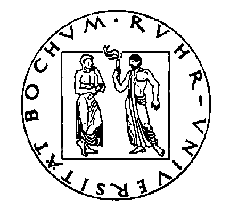 |
|
 |
 |
|
 |
You can find the following kinds of linguistic material on our server LiLab:
Readers of your publications will be interested in the acoustic form of your materials, not only to verify their existence but also to examine them from the point of view of an auditory expert. You as the author, on the other hand, may wish to make reference to auditive features of your material for which there might be no fixed terminology or which can't be easily recognized from visual presentations (F0 contours, spectrograms, and the like).
Our server LiLab makes it possible to make reference to the auditive form
of your examples and for your reader to listen to them. Add to your text a formula like
the following:
Audio files corresponding to the examples cited in this paper are accessible from the
server LiLab on http://www.ruhr-uni-bochum.de/LiLab/
To transfer your audiofiles (cf. How can you transfer data to our server Lilab?) you should provide us with information necessary to complete the following file table:
| file name | format/sampling rate | size | despription | text |
|---|---|---|---|---|
We use the term audiotext to describe a coordinated matching of written and acoustic fragments of registered speech. Acoustic citation, in a sense, is also an audiotext. The software SonaHear extends the range of listening options. The program makes use of a file listing to coordinate visual and auditive editing appropriate for different goals.
As a file listing in this sense one can make use of a list of file names in alphabetic or any other progression determined by the user, or the portions of text being ascribed to these files in the course of a working session. Here is an example of an audiotext:
The list of file names or the sequence of text fragments with their associated audiofiles as maintained by our program SONAHEAR allows for combined listening and editing on the screen. While reading the text you can move the cursor into one of the lines and listen to the corresponding audiofile by pressing ENTER. If you press a number instead you can listen to the same audiofile plus the corresponding number of following fragments. If you can't hear anything, see technical problems connected with hearing options.
The idea behind the preparation of linguistic material as an audiotext is to accompany the data from the moment of registration through all steps of scientific exploitation in order to facilitate the auditory reproduction for varying purposes. The preconditions and the results of the listening procedures and for the interpretation remains, thus, under control. It can be repeated and registered.
For an audiotext to be presented on our server LiLab no previous publication (as in the case of acoustic citations to publications) is necessary. All that is necessary for this kind of presentation is that you provide other users with information concerning your goals, i. e. that
Acoustic data bases are sets of speech samples which can be retrieved according to a certain set of categories. As a rule they are, due to their size not to be transported without problems. We will there for present only samples to stimulate information exchange betreen the author and the user. YouŽll find one example of this kind under acoustic data bases and principles of information exchange under How can you transfer data to our server Lilab?.
19. Oktober 1996